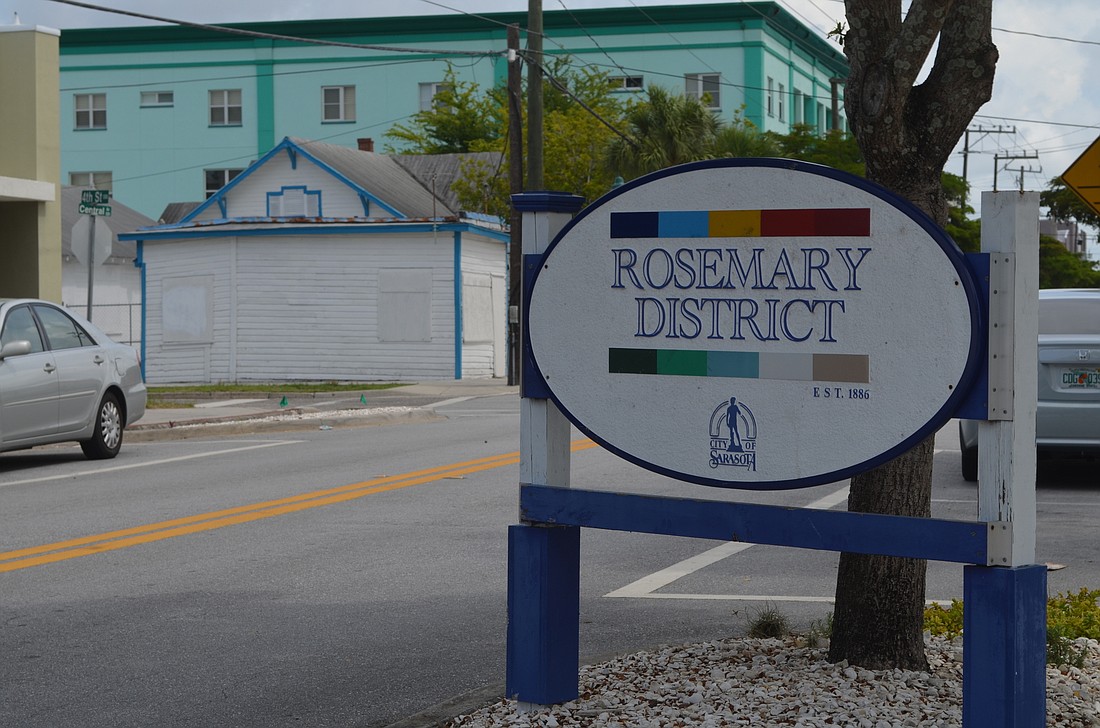- December 20, 2025
-
-
Loading

Loading

The overhaul of the Rosemary District — highlighted by the addition of more than 1,100 residential units in the 125-acre neighborhood north of downtown — is not a process that’s going to take place overnight. But Howard Davis knows it doesn’t hurt to be prepared.
For nearly two years, Davis and other Rosemary District stakeholders have been involved in a conversation about how best to accommodate the spike in growth that’s underway. Davis’ portfolio in the district includes the 19,900-square-foot Bota Center commercial project at 1570 Boulevard of the Arts.
The early stages of this conversation highlighted potential needs that might accommodate the arrival of more than a thousand new residents, nearly doubling the area’s population. Where could there be park space in the neighborhood? Where will all these new people park cars?
Last year, the Rosemary District Association formed a subcommittee, called the Rosemary District Strategic Planning Initiative. Led by Davis, the group began its grassroots planning effort last summer, connecting with stakeholders in the area.
“We’re talking to people about the district and its future and its challenges,” Davis said. “There’s been a tremendous amount of shoe leather and one-on-one outreach.”
In March, the initiative’s work intensified, holding a workshop and fundraiser designed to elevate the conversation and get the public involved. The goal is to create a vision and series of guiding principles to better define what the Rosemary District should look like a decade from now.
The group, privately funded, is working with planning firm Kimley-Horn to turn the data it has gathered into a road map for the future of the district. A March presentation showcased some of the information that’s been collected so far. For example, there are no grocery stores, convenience stores or coffee shops in the neighborhood. There’s no park space, either. Projections show a potential parking deficit of more than 600 spaces.
On April 25, the Rosemary District Planning Initiative will hold a meeting to present its vision and guiding principles to the public. In the meantime, the group continues to solicit public feedback. Davis encourages residents to take a 16-question online survey that asks about the present and future of the Rosemary District.
The survey invites respondents to share what words they’d use to describe the Rosemary District and what businesses they think the neighborhood is lacking.
Davis is concerned with creating a singular identity for the district. He doesn’t want it to be just another neighborhood in Sarasota. He wants people to know just what all this building is going to help accomplish, rather than figuring out the connecting fibers after construction is complete.
“Where would people like to see the district grow?” Davis said. “How can it be different than the other parts of Sarasota — and for that matter, how can it be the most distinctive place on the west coast of Florida?”
Eventually, the goal is to go to the City Commission and advocate for policies that address the neighborhood’s priorities before they become more pressing. The group hopes the effort will lead to a private-public partnership, though there’s no guarantee the city will buy in. Questions about funding have not yet been addressed, but Davis believes the current conversation will help the Rosemary District get ahead of any future complications.
And so far, he thinks the planning effort has revealed a neighborhood largely aligned behind the same ideals.
“I think there’s going to be a high level of consensus,” he said. “I don’t think we’re going to have 50% tugging in one direction and 50% tugging in a completely different direction.”